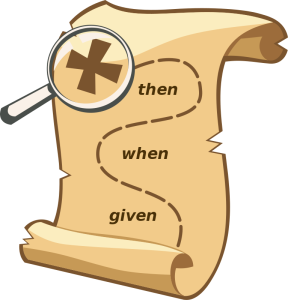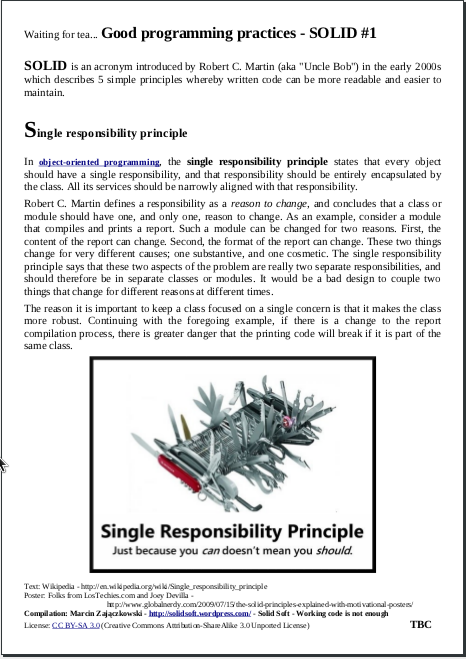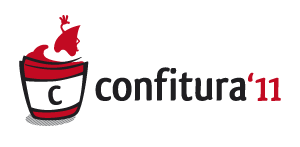“Not only individuals and interactions, but also a community of professionals” – The Software Craftsmanship Manifesto, 2009
Beginning
A long time ago (still) in a world of the prevailing Waterfall, I was fascinated by how Agile can simplify and streamline the process of software development. However, after some time committed to implementing the new approach in my organization, I was hit by the fact that even with Scrum (and all its fancy ceremonies) we can still produce code that – to use a euphemism — leaves more to be desired.
I started looking for some techniques to improve the quality of the created code and — as a result — the quality of the forged products and solutions. Clean code, automatic code testing, and Test-Driven Development were the most important missing parts I discovered. It was somehow satisfying to realize, after a while, that Extreme Programming, the Software Craftsmanship movement, and me, all had a common goal :)

Expansion
However, turning the ideas and theoretical knowledge into an efficiently working mechanism was not so easy. First, I needed to grasp (and preferably master) it on my own to be able to spread it successfully out into the company as a whole. In addition to literature and the Internet, I was lucky enough to encounter some fantastic people and interesting local initiatives which allowed me to meet other developers thinking the same way, exchange knowledge (and ideas), and practice using it in a safe environment (a number of Coding Dojo sessions with a lot of katas made on my own, in a pair or in a group). Being equipped with those (practical) skills, I had a solid foothold to now spread it within the company and pass it on to interested teammates. All with the ultimate goal in mind – to finally improve the quality of created solutions and to make customers and developers more satisfied. It was not hassle-free, to say the least, and in the end, not all of my goals were achieved, but sometime later – perusing my own path of a Software Craftsman – I moved on from that particular organization with the feeling that I had left some good things and ideas behind.
The main trigger for this — somehow personal — blog post is the fact that, in December, 10 years ago, I gave my first public speech at the Warszawa JUG meeting. It featured the power of the full-text search mechanism embedded into a custom application with the help of the Compass library (which later on became a foundation of Elastic Search). The talk wasn’t perfect but based on the feedback, some of the attendees definitely learned something new. In addition, what was also very important was that it showed me how much I can learn myself while preparing a presentation for others. So, I started to share the ideas in wider circles.
Stabilization
The topics covered quickly turned into my main specialization — code quality and automatic code testing (together with the related aspects such as Continuous Delivery) to show other people the way and encourage them to try it on their own. Since that time, I have given dozens of talks for local user groups, small closed events, and large international conferences, both in Poland and across Europe. I (co-)organized some local meetups and larger conferences. I also wrote a number of (educational) blog posts. While I was gradually reducing my active commitment in the community (after all, a day has only 24 hours), a while after my initial presentation, I also started to conduct training sessions for groups and organizations to spread (good) ideas and practical skills in depth. Being a trainer, in the process of time, turned into a regular part of my working life, but I still try to be on terms with current techniques and tools, working hands-on with real projects and solving real problems. It also helps me to enrich my training with anecdotage and real-world examples from my own experience. I really like to demonstrate to less experienced fellow developers how their solutions could be more readable, more bullet-proof, and easier to maintain.
The Future
Is it still needed in 2020+, one might ask? Based on my experience from all my activities, the situation in general has improved over time. Unfortunately, there is still a lot to do. Automatic code testing is still not properly covered during studies or is not presented to students at all. Large parts of commercially developed software cannot be truly named “high-quality” and solid automatic code testing (not to mention Test-Driven Development) is not considered to be a MUST HAVE in all projects. Therefore, I continue my mission to make the world a (slightly) better place, by preaching the ideas that are worth spreading, building a community of professionals, and paying back to people and communities who — at the beginning of my journey — were there to assist in my growth.
Are you able to change the world? Good point. The IT world is quite big, and I cannot reach everyone. However, I am not the only one. For instance, looking at my fellow trainers, I see a number of passionate professionals with various areas of expertise, caring – in different ways – about high levels of knowledge in the community, which makes the whole thing look (a little) less hopeless :).
Is it worth doing? Well, firstly, continuous learning — a requirement to be a good trainer (and speaker) — is definitely a benefit for me. Secondly, I want to work with sensible people on a daily basis. Therefore, the more of them, the better. Thirdly, occasionally there are people who encounter me in one or another way to say “Thank you” for the things I directly or indirectly did (which were somehow beneficial for them). It is really elevating to see that you were able to help someone in something. In those moments, I clearly see that my work did not go entirely down the drain :).
P.S. Recommended reading: “The Software Craftsman: Professionalism, Pragmatism, Pride” by Sandro Mancuso
(Please note, the link above is linked to my account at Amazon. Feel free to use this generic link instead if preferred)
The lead photo by Anemone123 obtained from Pixabay.




